Methodology note: I used Twitter to gather votes, using its 'poll' feature, because I have enough followers that I could gather a lot of data very quickly(!) Mind you, when selecting 'Other', people often didn't just pick one phone, confusing the counting somewhat. The other three options I chose to present (because I figured they should be somewhere in the Top 5) were the Lumia 800, the 1020, and the 950/XL, all of which are indeed below. Would as many people have remembered the 800 without my prompting? Who knows. Anyway, it's in the top 5 and even got as much as a third the number of votes as the 950/XL (two models, counted as one for the purposes of this feature).
OS note: I guess I should acknowledge the original 'Windows Mobile' smartphones as well, which were around, with a totally different underlying OS and interface, from the early 2000s to around 2008. But they're outside the scope of AAWP, so.... Quite a number of respondents did name check the classic HTC HD2, a large screened Windows Mobile phone that then got flashed to run all sorts of alternate OS, so a shout out to that too!
The first Windows Phones were produced in 2010, made by HTC, LG and Samsung - and we finish the operating system's run, eight years on, with HP and Alcatel being the ones making the new hardware. Yet in between there were (literally) dozens of Nokias and then Microsoft-branded Lumias. With around fifty different models to choose from (depending on how you count), here are the ten that most impressed respondents to my poll, the ten that are perhaps worthy to be counted as classics and retained even today, and used with pleasure, with the usual 2019 service caveats!
Anyway here goes with the (voted) top 10 'Windows phones' - and yes, note the small 'p', since this covers the Windows 10 Mobile era too, so we're not just looking at 'Windows Phone' per se. With increasing detail as we head to no. 1(!):
10. Alcatel IDOL 4 Pro (2017)
Already picked as my favourite Windows phone of 2019, the IDOL 4 Pro has so much to recommend it in terms of hardware that keeps pace with the Android phones of its era - 2016/2017. And it still looks super today. But it was ultimately let down by lack of TLC from Alcatel in terms of fixing camera and fingerprint sensor issues - and it was left to me, yours truly, to micro-manage Microsoft into updating it to W10M branches 1703 and then 1709. Oh well.
9. Nokia Lumia 925 (2013)
Back when this launched, the aluminium frame and svelte looks were groundbreaking. Allied to the futuristic Windows Phone 8 interface, the 925 was a breath of fresh air in terms of cosmetics. Add in the 920's OIS-equipped camera and an AMOLED screen, for a clear favourite among users. Fun fact: AAWP never reviewed it - Rafe unboxed it and then loved it so much that he never lent it to me for a full review! I think I was the one who missed out.
8. Nokia Lumia 830 (2014)
Along much the same lines as the 925, but launching with Windows Phone 8.1 and, despite the slim lines, with a replaceable back and battery! The 830 did so much right, but it was ultimately underpowered in terms of chipset and RAM (only 1GB, at the end of 2014, was looking a little light), plus there was a design flaw that caused the Qi charging coil to make discomforting noises when in use. And don't get me started on how great the camera was before Microsoft ruined it in the Lumia Camera 5 update...
7. Microsoft Lumia 640/XL (2015)
Ah yes, the 640 and its XL sister were 'classic Lumia', in that they were cheap and cheerful yet pretty fully functioned. Decent screens, replaceable batteries, very durable, affordable for a teenager, both my units ended up with family members and were last seen, still working, years later, despite all sorts of bits of plastic being chipped off from numerous drops.
6. Nokia Lumia 930 (2014)
A rare Lumia made from cast and machined aluminium, it still feels a million dollars in the hand, but it had a number of obvious flaws. Firstly, despite the gorgeous AMOLED display, there was no 'always on'/glance display, an oversight which Nokia later acknowledged. Secondly, the battery life wasn't great and the heat management terrible, with the Snapdragon 800 making the rear plastic often too hot to touch. Oops. Happily, much of the 930 is reimagined, more successfully, in polycarbonate form in the no. 5 pick below!

5. Nokia Lumia 1520 (2013)
This was an outrageous phablet from Nokia in 2013 - the 6" screen looks quite normal these days, but the Lumia 1520 was released when most phones had 4" displays. Only the stylus-centric Samsung Galaxy Note range on Android dared to venture into 5" territory, and the Lumia 1520 made the Samsungs look like toys. But here's the thing. Not only was the phablet concept in the 1520 future-looking, the internals have held up well too, with the Snapdragon 800 and 2GB RAM still powering Windows 10 Mobile along nicely for all those lucky users who did the official upgrade and who then did our '950 hack' to get branch 1709...
I say 'lucky' because the 1520 as never distributed anywhere near as widely as the budget Lumias - so 1520 units today are prized, almost collectors' items, the 6" 1080p LCD display with CBD still looks fabulous at the end of 2019.
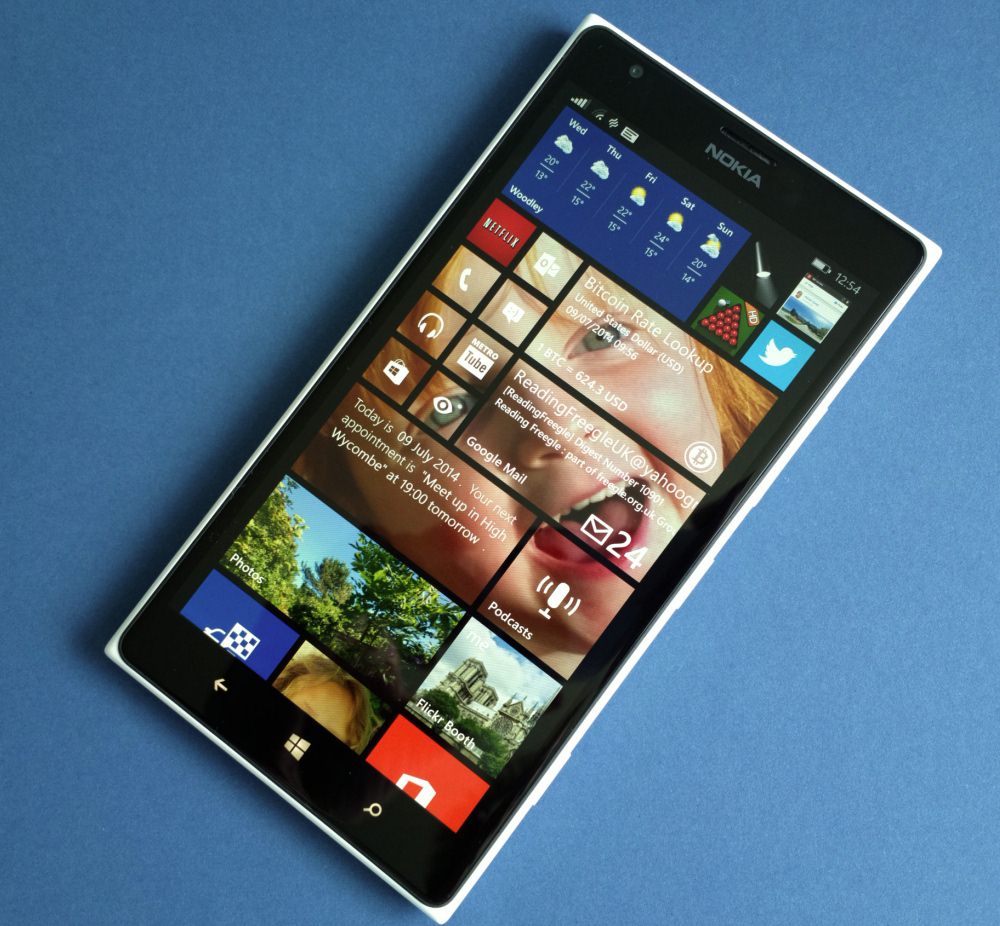
The camera's the same as the one in the Lumia 930 (that followed) and set the 21MP pattern for the 950 and 950 XL that followed a couple of years later. In fact, you could say that the Lumia 1520 set the pattern in many ways for the whole of the smartphone world (even though it's Samsung and Google who will be remembered most for introducing 'phablets', as they were called at first).
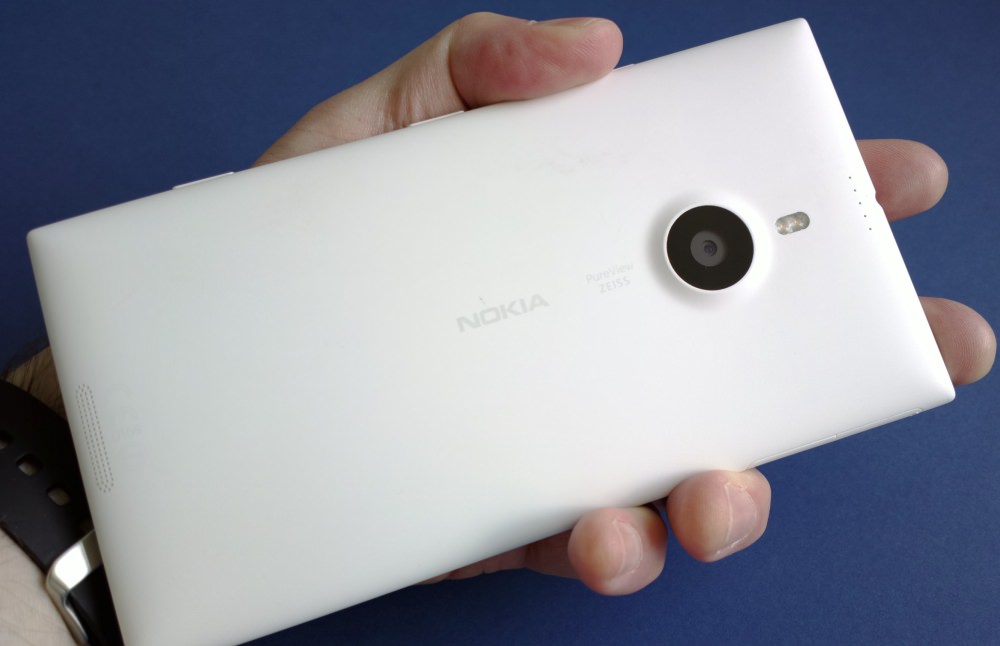
4. Nokia Lumia 920 (2012)
The 920 was notable for three things. Firstly, its design, with a polycarbonate 'monoblock' feel. Very much like the no. 3 below, but taken to a whole new level. The 920 is just so... solid. Rugged, heavy (for its size), it's a dense mass of tech that never fails to impress in the hand. The curved back extends round the sides and onto 2.5D front curved glass, just beautiful design for 2012.

(publicity shot for the 920, showing off the Nokia/HERE Maps augmented reality view, something which Google Maps is just getting in 2019, seven years later!)
Secondly, the first use of OIS (Optical Image Stabilisation) in a phone, I believe. This enabled super crisp low light shots and paved the way for just about every mid range phone upwards for the next seven years. To this day 920 fans claim they can take better shots on the phone than on Android or iOS competition. I suspect they're wrong, but the zeal is impressive!
Finally, the first use of Qi charging in a phone (again, I believe, feel free to correct me!) Wireless charging is now utterly ubiquitous in flagship smartphones, from iPhone to Samsung to Huawei - but the Nokia Lumia 920 started the trend and, yet again, was ahead of its time.
I still own this, though I stopped using it soon after release because, well, the no. 1 phone below got launched!
3. Nokia Lumia 800 (2011)
Ah yes, happy days. Nokia World 2011. The cream of the world's journalists... plus myself, David, Ewan and Rafe! The last event that all four of the team were employed and in the same place at the same time. Here we all are, working hard crafting words for AAS and AAWP(!):

Nokia finally launched its take on Windows Phone (7.5), with the Lumia 710 that had 'functional' design and replaceable battery, plus the futuristic Lumia 800 that mimicked the Nokia N9 with all-curved 'ship in a bottle' design. The idea of a Nokia that was sealed, with no memory cards, no way to change the battery, was unusual, but history has shown that such 'sealed' designs won out in the end, just look at 2019 flagships.
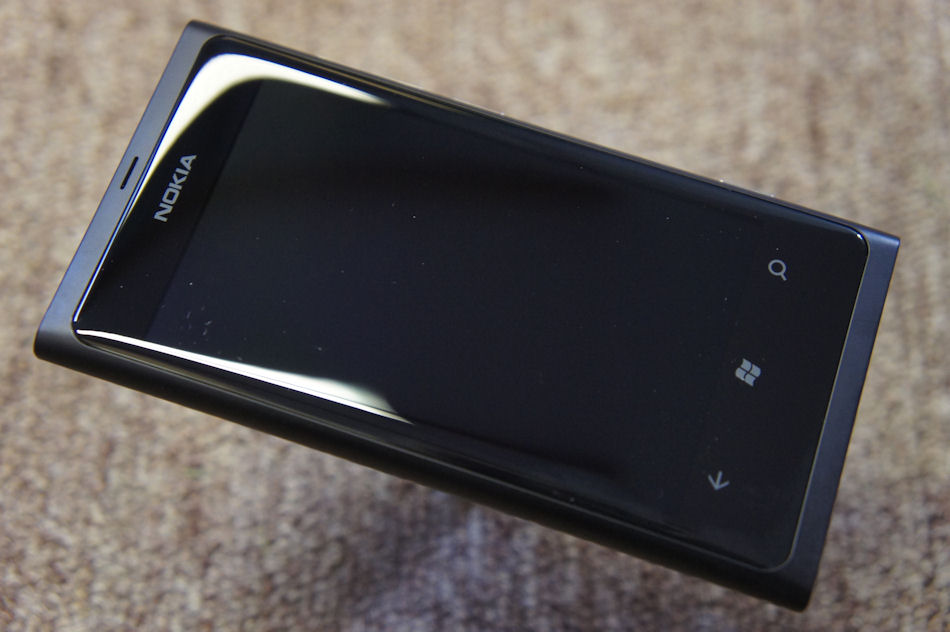
(No, not the 2001 obelisk, but close - the Lumia 800...)
In use, the Lumia 800's camera was decent for the name, but not ground breaking, plus it didn't have a front camera, infamously. With the fairly primitive Windows Phone version and very few applications available, even for 2011, the 800 was never going to be a chart topper, but it still won plenty of fans. Today, with the N9 (running Meego), it represents a futuristic high water mark in terms of design.
2. Microsoft Lumia 950 XL (2015)
It's hard to actually love the official Microsoft flagship from late 2015 onwards, and not just because you can't really buy it anymore. The relatively flimsy plastic is improved slightly with the addition of an (also plastic-based, but covered in real materials - leather, bamboo, etc.) Mozo replacement back, but you still never get the impression of this being a serious tool for serious activities.
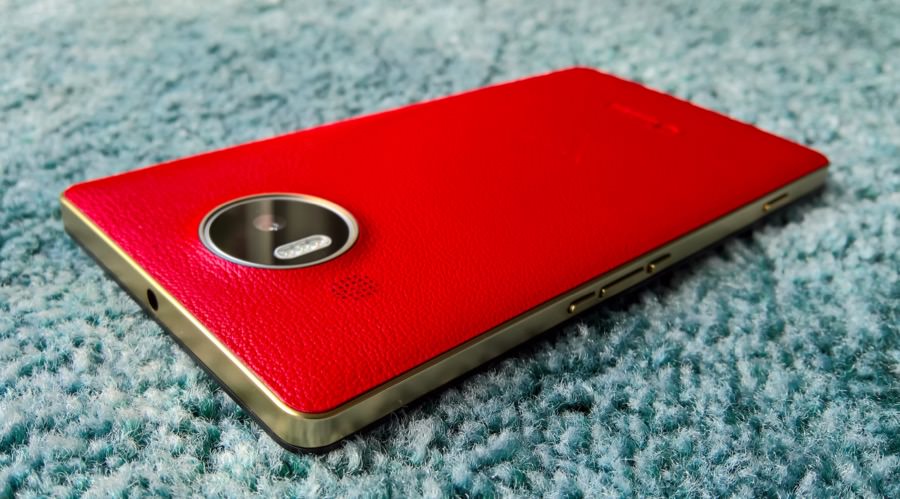
Camera excepted. The 950 XL still has a competitive camera even in the phone world of 2019, with very few weaknesses. Maybe over-blocky digital zoom and very low light focussing could be picked out as minus points, but most of the time the 950 XL camera is still right up there.
What also helps tip the 950 XL up into the number 2 spot in the poll is its super display, one of the best in the Lumia range, and the flexibility in terms of being able to swap out the battery, expand storage with a card, and generally get your hands dirty with its internals. This isn't an all-sealed unibody device wherein you're at the mercy of the manufacturer's design choice - here you get to see what's inside and have an influence. Compare and contrast with iPhones, Samsungs, etc.
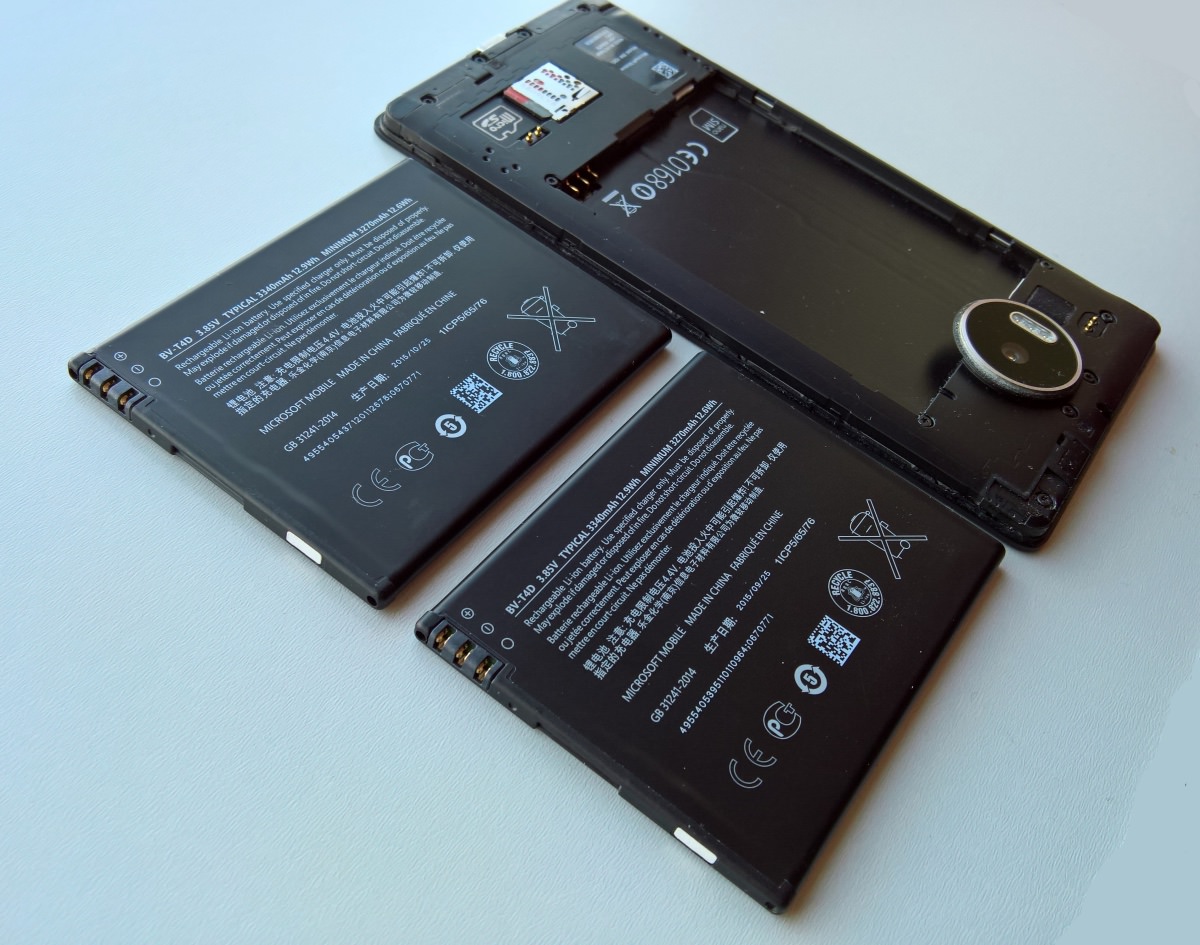
1. Lumia 1020 (2013)
No Nokia/Lumia has engendered as much love before or since, I suspect. Perhaps the sister device on Symbian, the 808 PureView comes close. It's perennially 'most people's favourite Lumia', and deservedly so. A perfect size, an almost perfect camera, a range of interesting accessories, so much to like.
But the 1020 did have an Achilles heel or two, as longstanding users will attest. The reliance on doing 38MP oversampling down to 5MP without a dedicated Image Signal Processor (ISP, as on the Nokia 808 predecessor) meant that each photo taken on this classic camera smartphone would take around three seconds to process and save. This is an eternity by modern phone camera standards and seriously got in the way of taking rapid bursts of photos of kids, pets and general action. Yes, there was Xenon flash, and this sometimes helped by freezing the subject, but you didn't usually get many 'bites at the cherry'. And then, even for flash-lit shots, there was often the distinctive Lumia 1020 yellowish colour cast.
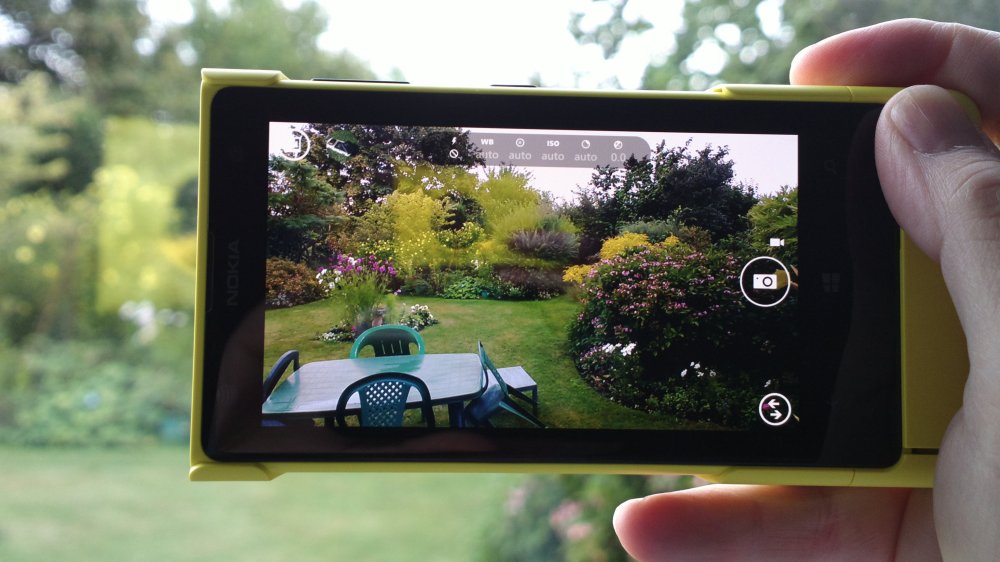
But take all this with a pinch of salt, because for many of us the 1020 was a way to get much of the classic Nokia 808 camera functions plus OIS (for those arty night shots) plus the party piece of dual capture and 'reframing later' (or not) plus an OS designed for this decade (now nearly over as I write this!) rather than the previous one. As it turned out, the 1020 wasn't that future proof, since the old Snapdragon S4 processor made something of a meal of Windows 10 Mobile and it was omitted from Microsoft's official upgrade program. But on Windows Phone 8.1, its native OS, the Lumia 1020 still runs smoothly, albeit with applications that have mostly not now been updated for a couple of years and which can't now be reinstalled from the Store after a reset. Oh well.
The yellow 1020 was the one chosen by Nokia to promote the model and it was by far the most common, with its garish colour and huge circular camera island (now heavily back in fashion on 2019 Android flagships!) Which of us hasn't glimpsed a Lumia 1020 in a TV programme or film and thought 'Hey, I've got one of those, good choice Mr Director!'

A worthy top of the poll here, with as many votes as the rest of the top 6 put together(!) - but your comments welcome on all of the above.
